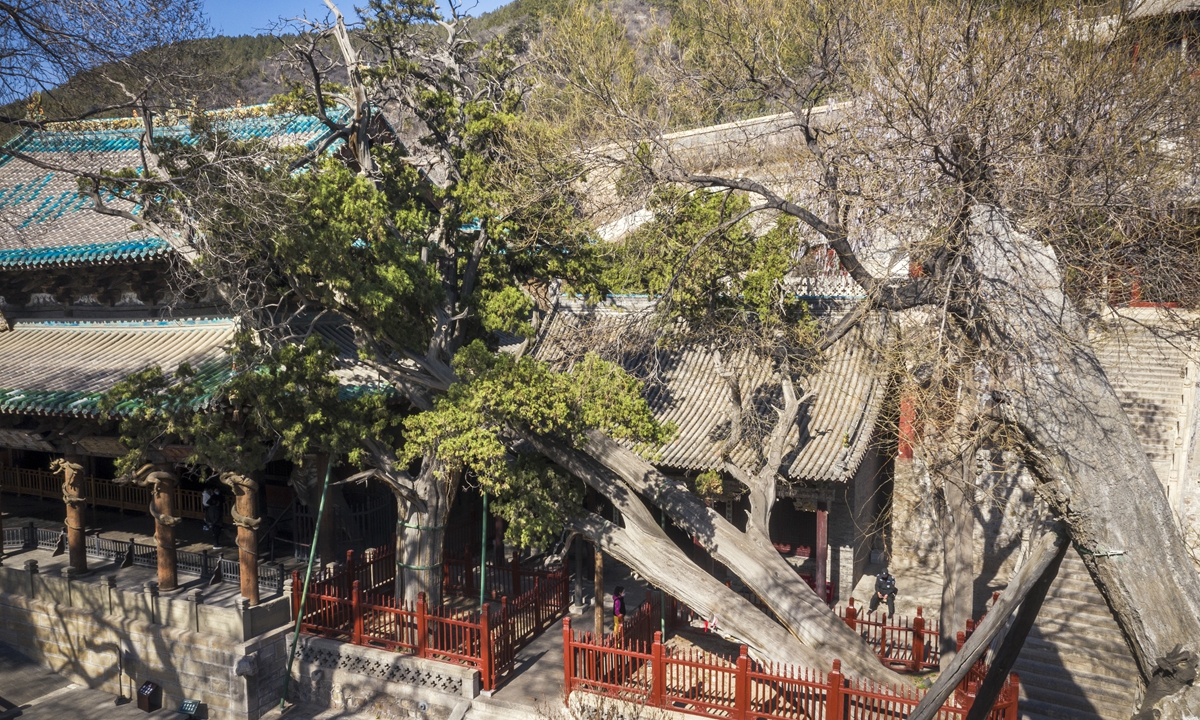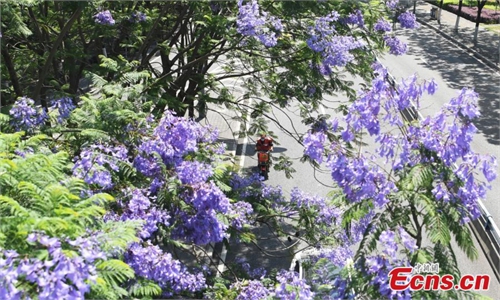ARTS / CULTURE & LEISURE
Cutting-edge technology helps to prolong the longevity of ancient trees in China

Cypress in Jinci Temple, North China's Shanxi Province Photo: Courtesy of Jinci Temple
Could a tree that has already lived thousands of years continue to prolong its life with the support of cutting-edge technology? Of course! Experts from Jinci Temple, the most prominent temple complex in North China's Shanxi Province, said they have formulated a rejuvenation plan based on scientific and technological means for the healthy continuation of several ancient trees.Zhang Shumin, the head of the project Nondestructive Testing Technology of Millennium Ancient Trees and a research fellow at the Taiyuan Cultural Relics Protection Research Institute in Shanxi Province, told the Global Times that Jinci Temple has five ancient trees that have lived more than a millennium, with the oldest tree, a cypress, first taking root more than 3,600 years ago.
"Jinci Temple, a temple for the imperial family, planted a lot of ancient trees during different dynasties, including the Han Dynasty (206BC-AD220), Jin Dynasty (265-420), Sui Dynasty (581-618) and Tang Dynasty (618-907). The trees can be seen as a group of living ancestors who have witnessed the history of China," Zhang joked, going on to explain that the secret to the trees longevity is the ideal environment at the temple, which is surrounded by mountains and forests and has plenty of clean air and water.
How to better protect these ancient trees has been an important topic for the staff at the temple.
According to Zhang, through the Nondestructive Testing Technology of Millennium Ancient Trees project, they have used PiCUS3 sonic tomograph technology, which is similar to a CT scan, to determine the internal health of the tree, including locating any internal rot.
Meanwhile, they used TRU Antenna technology to monitor the root system of the trees and examine things such as the absorption of nutrients, which part of the root system is growing better and which part has been impacted by the surrounding ancient buildings. With this information, the team can add nutrients to the well-measured stratum to induce the root system to grow toward the surrounding open areas and avoid the ancient buildings.
For detection and analysis of the soil's physical and chemical properties, they turned to microbial Biolog functional diversity technology. Zhang explained that this helps them analyze the nutrition absorption of the trees' leaves.
Due to the fact that the trees are different species and have different lifespans, the project cannot yet provide a definite number for how many more years the trees will live after treatment.
"Thanks to the valuable 'living relics' at the Jinci Temple, the project to help prolong the longevity of ancient trees is the most comprehensive program in not only China but also the world, and it has important cultural value for the historical research and future development of ancient trees in China," said Zhang.
Currently, the project has been approved by local officials. The project team has completed a data and business report and plans to carry out targeted protection of the ancient trees according to the data they have collected. The successful implementation of the project might be imported to other provinces and regions across the country, according to Zhang.




